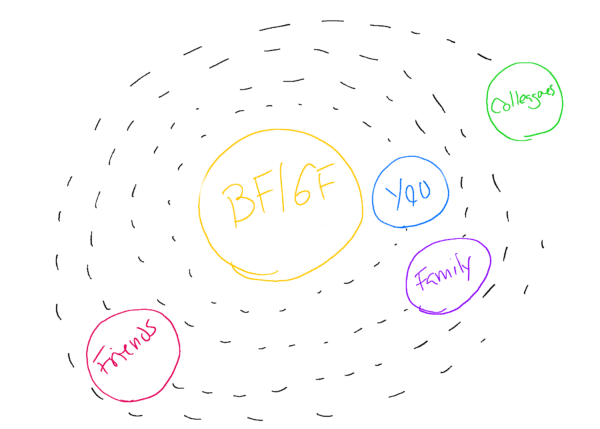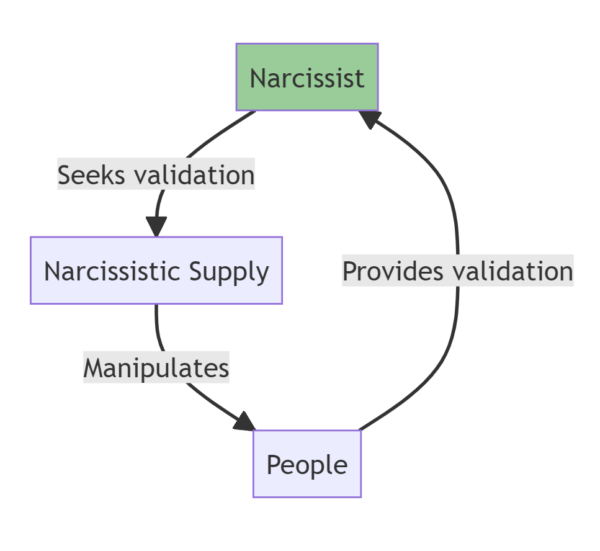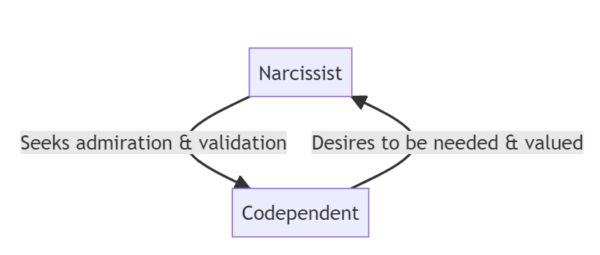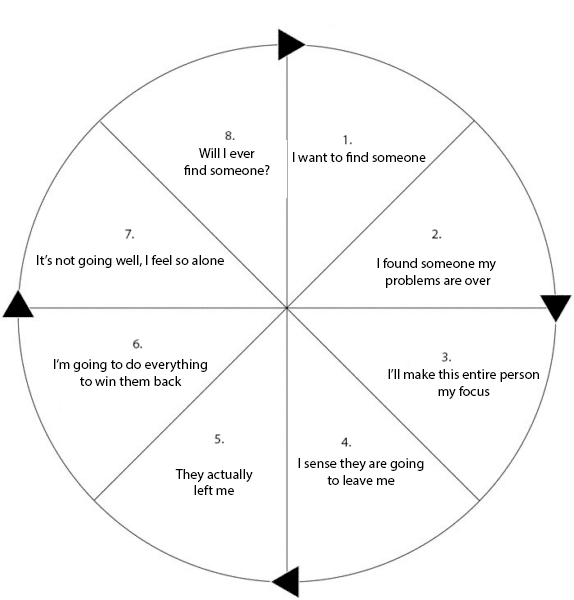Today I’d like to talk about why breakups are so hard for codependents.
But first, let’s set the foundation. Research has consistently pointed to the fact that most codependent individuals tend to have an anxious attachment style.
And seeing how the majority of our clients have anxious attachment styles,
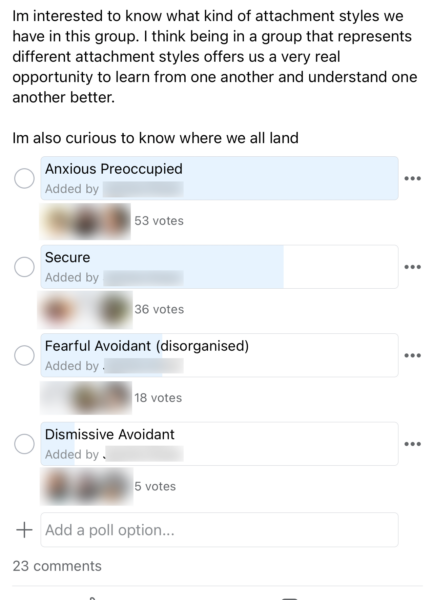
I feel I’m uniquely qualified to speak to why breakups tend to be so hard for codependent individuals.
A codependent individual often bases their sense of self-worth and identity on taking care of, sacrificing for, and being needed by their partner or other individuals.
Breakups can be particularly challenging for codependents for seven core reasons:
- Loss of Identity: For someone who is codependent, their identity is often intertwined with their partner. When the relationship ends, they might feel as if they’ve lost a part of themselves.
- Fear of Abandonment: Codependents often have deep-seated fears of abandonment. A breakup can bring those fears to the forefront, triggering strong emotional reactions.
- Loss of Control: Codependents might try to control situations or other people’s behaviors in an attempt to find security and stability. A breakup represents a loss of control, which can induce anxiety and distress.
- Guilt and Responsibility: Codependents might blame themselves for the end of the relationship, thinking that if they had just done more or been “better,” the breakup could have been avoided. They might feel a disproportionate amount of guilt and responsibility for the end of the relationship.
- Loneliness and Isolation: Since codependents often place their partner at the center of their universe, a breakup can leave a void, leading to feelings of extreme loneliness and isolation.
- Rejection Sensitivity: Many codependents have heightened sensitivity to rejection. The end of a relationship can be experienced as a profound and deeply personal rejection, even if the breakup was mutual or for the best.
- Habitual Patterns: Codependents might have a history of entering into similar types of relationships due to unresolved childhood trauma or unmet emotional needs. After a breakup, there might be a compelling, albeit unhealthy, urge to enter into another codependent relationship to fill the void.
Let’s discuss.

What Are Your Chances of Getting Your Ex Boyfriend Back?
Take the quizLoss Of Identity
For someone who identifies as codependent, their sense of self is deeply intertwined with their partner. Consequently, when such a relationship ends, it can evoke feelings of losing a piece of themselves.
A recurring analogy I draw upon on this website to depict codependency likens it to a solar system.
Ideally, each person should be the center of their own solar system, essentially the sun around which other aspects of their life revolve.
However, codependents often find themselves not at the center of their own lives but orbiting someone else’s world. Instead of having their distinct planets and moons, they become merely a minor component in another person’s universe. Being ejected from that role can be profoundly disorienting for them.
So, what’s the solution? It’s a topic rarely broached in the industry. Fortunately, I had the unique chance to discuss this with psychologist Julia Kristina. When asked for her advice regarding codependent relationships, she emphasized the importance of transitioning to an interdependent relationship model.
Here’s her perspective on the matter:
Examining our relationships often entails determining how we can depend on someone else while also depending on ourselves. Codependency is the condition of becoming excessively reliant on another for our sense of self and identity. Contrary to Jerry Maguire’s famous line, no one else can truly “complete” us. We might hope someone else will say the right thing, or believe they’ll solve our problems, but this isn’t a sustainable foundation for a relationship.
Interestingly, research indicates that people in committed relationships are, contrary to popular belief, only slightly happier than those who are single. This statistic suggests that while relationships offer a kind of happiness, it’s not as profound a difference as one might assume. Regardless of our circumstances, we bring ourselves into every situation. In a relationship, you benefit from having a built-in friend, someone to make plans with, and a companion for life’s mundane moments. However, relationships also come with the responsibility of accommodating another person’s schedule, preferences, and ways of doing things. Like everything, relationships have their pros and cons. The same can be said for being single.
When people express fears of codependency, they often believe they need someone in their life to feel complete. This notion is a misconception; our well-being doesn’t rely solely on another person’s presence in our life.
The Interdependent Relationship Versus The Codependent Relationship
An interdependent relationship and a codependent relationship represent two very different dynamics when it comes to personal boundaries, mutual respect, and the nature of reliance between partners. Here’s a breakdown of their differences:
Interdependent Relationship
- Mutual Respect and Equality: In an interdependent relationship, both partners view each other as equals. Each person respects the other’s autonomy and individuality.
- Balanced Give-and-Take: While partners rely on each other, there’s a balanced exchange of support. Both partners are willing to give and receive help, and neither feels overburdened or taken advantage of.
- Healthy Boundaries: Each individual recognizes and respects the boundaries of the other. They understand that both of them have separate needs, interests, and lives outside the relationship.
- Shared Goals: While maintaining their individual identities, partners in an interdependent relationship often have shared goals and values that they work towards together.
- Emotional Resilience: Both partners have the ability to manage their own emotions and can also support the other during challenging times. However, they don’t entirely rely on the other to regulate their emotional well-being.
Codependent Relationship
- Unequal Dynamic: One partner typically takes on the role of the caretaker or the one who constantly gives, while the other becomes overly reliant or takes on a more passive role.
- Enmeshed Boundaries: Boundaries in a codependent relationship are often blurred. One partner may feel responsible for the other’s emotions, decisions, and well-being to an unhealthy extent.
- External Validation: Individuals in a codependent relationship might seek external validation primarily from their partner and might base their self-worth on the relationship or their role in it.
- Fear of Abandonment: Codependent individuals often have a deep-seated fear of abandonment. This fear can lead them to be overly accommodating or submissive, even if it’s detrimental to their well-being.
- Lack of Autonomy: There’s often an overwhelming sense of “needing” the other person, to the extent that one’s own desires, needs, or identity become secondary or completely overshadowed.
Fear Of Abandonment
Let’s delve into the “fear of abandonment.” A

What Are Your Chances of Getting Your Ex Boyfriend Back?
Take the quizt the outset of our discussion, I noted that many individuals with codependent tendencies or identities often exhibit anxious attachment styles.

Fundamentally, someone with an anxious attachment style harbors a deep-seated fear of abandonment.
When such individuals enter relationships, any event or signal suggesting potential abandonment can precipitate their anxious behaviors.
My contention is straightforward: the profound struggle codependents face during breakups stems from their anxious tendencies being triggered. Their most dreaded fear — abandonment — has been realized. Consequently, they might resort to drastic measures, trying to reclaim their exes or mend the situation.
While many criticize anxious attachment styles for their perceived negativity, they aren’t inherently detrimental.
In my experience, individuals with this attachment style often excel at problem-solving.
However, the challenge is they frequently focus on the wrong issues.
I’ve observed that many of my clients tend to gravitate towards partners with dismissive avoidant attachment styles. As they tirelessly work to “fix” the relationship, their efforts inadvertently activate the avoidant’s core wounds, causing the partner to further distance themselves.
Loss Of Control
At the heart of many codependent behaviors is an underlying desire for control. This desire is often rooted in past experiences, trauma, or instability, which can lead the individual to develop coping mechanisms focused on managing and controlling their environment and relationships to ensure their emotional well-being.
- Origins of the Need for Control: For many codependents, their need to control may trace back to childhood or past relationships where they felt unsafe, unheard, or unimportant. In environments where unpredictability or inconsistency was the norm, they might have learned to overcompensate by attempting to control situations or people around them as a way to achieve some semblance of safety or predictability.
- Perceived Safety in Control: By exerting control, codependents often feel they are shielding themselves from potential harm, rejection, or chaos. Their desire to manage situations, decisions, or even the emotions and actions of others can be seen as a protective mechanism. They believe that if they can just orchestrate things “just right,” they can avoid pain or emotional distress.
- Breakups and Loss of Control: In the context of a relationship, a breakup can feel like the ultimate loss of control for a codependent. Their efforts to maintain the relationship, often at great personal cost, come crashing down. This sudden change disrupts their sense of order and predictability, leading to heightened anxiety. They might ruminate on what they could have done differently or how they could have exerted more control to prevent the breakup.
- Consequences of the Loss: When faced with a loss of control, codependents might experience a surge in anxiety, depression, or obsessive thoughts. They might become overly self-critical, questioning their worth and adequacy. In some cases, they might seek out new relationships or situations where they feel they can re-establish this lost control, even if these situations are not healthy for them.
- The Illusion of Control: It’s essential to understand that control, especially over others, is often an illusion. No one can truly control another person’s feelings, choices, or behaviors. Realizing this can be both frightening and liberating for codependents. Frightening because it confronts their deep-seated fears and insecurities, but liberating because it opens the door for genuine growth, healing, and the development of healthier relational patterns.
Guilt And Responsibility
For codependents, guilt and responsibility are intertwined, often manifesting as an overbearing weight that they carry, particularly when relationships experience challenges or end. This internalization of blame can stem from various sources and have significant impacts on the individual’s well-being.
- Roots of Guilt: The propensity for codependents to internalize blame often originates from early life experiences. They might have grown up in environments where they were held responsible for others’ happiness or well-being, or where they felt they had to be “perfect” to be loved or accepted. Over time, this can develop into a pattern of always feeling “at fault” when things go wrong, even if logically, they had little to no control over the situation.
- Over-Responsibility: Codependents often take on an excessive amount of responsibility in relationships. They believe it’s their duty to fix, heal, or save their partners, often sacrificing their own needs in the process. When a relationship ends, they might automatically assume they didn’t do enough or that they failed in their perceived role.
- Emotional Consequences: Carrying the weight of misplaced guilt can lead to feelings of shame, low self-worth, and even depression. Continuously blaming oneself can erode self-confidence and fuel negative self-talk, creating a cycle where the codependent feels perpetually inadequate.
- Impacts on Future Relationships: If not addressed, this guilt and sense of over-responsibility can carry over into future relationships. Codependents might walk on eggshells, constantly fearing another “failure” and becoming even more submissive or accommodating, which can lead to further imbalances in relationship dynamics.
How To Challenge the Guilt:
One of the healing paths for codependents is to learn to differentiate between taking appropriate responsibility and shouldering undue blame. Recognizing that they are only responsible for their own actions and cannot control or change others is crucial.
Moreover, understanding that a relationship involves two parties, both of whom contribute to its dynamics, can help in dispelling the illusion that the codependent is solely at fault.
Loneliness And Isolation
As I’ve previously mentioned, codependents often position their partners at the very core of their existence.
When that pivotal figure is removed, it can create an emotional chasm, akin to a void or vacuum.
This phenomenon can be best understood with the solar system analogy I’ve frequently referred to. Individuals who anchor their entire universe around their partners are left directionless when that relationship concludes.
That’s where the enmeshment concept comes into play.
Enmeshment: Codependent relationships often involve enmeshment, where the boundaries between two individuals become blurred. The codependent’s identity, emotions, and well-being become intricately entwined with their partner’s. When the relationship ends, it feels as though a part of them has been torn away, leading to profound feelings of emptiness and isolation.
The Danger With Narcissists
Interestingly, codependents often find themselves ensnared by narcissists, presenting a captivating dynamic.
- Codependents derive their self-worth from their capacity to support, aid, or be indispensable to their partners. When the relationship ends, the absence of this external validation leaves them feeling adrift and devalued.
- In contrast, narcissists extract their sense of significance from manipulating others, thriving on admiration and what’s often termed ‘narcissistic supply’.
I’ve extensively discussed this behavior in narcissists before.
This sets the stage for a paradoxically harmonious yet destructive dynamic. The narcissist seeks admiration and validation, which the codependent readily provides, craving a sense of purpose and value. The result is a cyclical pattern of exploitation, where one party capitalizes on the other’s vulnerabilities, and the latter perpetually allows such manipulations, creating an unending loop.

What Are Your Chances of Getting Your Ex Boyfriend Back?
Take the quiz
Here’s why these two types of individuals might end up together:
- Complementary Needs: At the core, narcissists crave constant attention, validation, and admiration. Codependents, on the other hand, have a strong desire to be needed and to care for others, often to the detriment of their own needs. This creates a cycle where the codependent provides constant attention and validation to the narcissist.
- Validation for the Codependent: A narcissist might initially provide the codependent with the validation they seek, making them feel important or valued for their caregiving and supportive role.
- Control Dynamics: Narcissists often seek to control and manipulate their partners to maintain a position of power. Codependents, due to their fear of abandonment and desire to please, might easily fall prey to these manipulations.
- Rescue Fantasies: Codependents often harbor fantasies of rescuing their partner, hoping that their love and care can “fix” them. This aligns with the narcissist’s desire to be adored and the center of attention, creating a dynamic where the codependent continually tries to “save” the relationship or the narcissist from perceived issues.
- Low Self-Worth: Both narcissists and codependents might have underlying issues related to self-worth, albeit manifesting differently. While narcissists project an inflated sense of self-importance to mask deep-seated insecurities, codependents often seek external validation to compensate for feelings of inadequacy. This shared underlying vulnerability can draw them together.
- Initial Charm: Narcissists can be charming and charismatic, especially in the early stages of a relationship. They might shower the codependent with attention and admiration, making the codependent feel special. Over time, as the relationship progresses, the more manipulative and controlling aspects of the narcissist’s behavior may emerge.
Rejection Sensitivity
Rejection sensitivity, defined as an acute vulnerability to the possibility of rejection, is particularly pronounced in individuals with codependency tendencies.
This heightened sensitivity often originates from childhood experiences where affection or attention was inconsistently provided, leading to a deeply ingrained fear of rejection in their adult relationships.
Coupled with a strong need for external validation, stemming from feelings of inadequacy or low self-worth, even minor perceived rejections can evoke significant distress. Such individuals might amplify the implications of these rejections, interpreting them as reflections of inherent unworthiness.
To stave off potential rejections, they may suppress their own desires, needs, or boundaries, inadvertently causing imbalances in their relationships. Even mutual or necessary breakups might be perceived as the ultimate form of rejection, reinforcing internalized fears and beliefs.
Understanding and addressing this intense sensitivity is crucial for those with codependency to foster healthier relational dynamics and a more secure sense of self.
Habitual Patterns
Codependent individuals frequently find themselves trapped in recurring patterns or habits, especially concerning relationships.
As I’ve reiterated multiple times – and will continue to emphasize because of its significance – most codependents exhibit an anxious attachment style. What’s particularly intriguing about this style is its self-perpetuating cycle.
I’ve termed this the “anxious attachment death wheel” because it frequently heralds the demise of relationships, trapping individuals in a never-ending loop.
This cycle comprises eight primary stages:
- Desire for Connection: The anxious individual begins with a yearning to find someone.
- Finding Someone: Upon meeting someone, they convince themselves that their relational issues are resolved.
- Over-focus: They decide to make their new partner the epicenter of their world. This stage is where codependent tendencies often manifest, sometimes with alarming rapidity.
Drawing from popular culture, an example that comes to mind is the initial season of “The Bachelor in Paradise.” It’s intriguing to observe how swiftly and intensely some participants form connections.
Though their physical appeal is undeniable, many seem ensnared in the anxious attachment loop.
They enter the show seeking connection.
Upon finding someone, they feel elated and, to preserve this euphoria, hyper-focus on their newfound partner.
This intensity can inadvertently push the partner away, leading to heightened anxiety and even more intensified efforts to retain the relationship – often culminating in the very abandonment they feared.
- Sensing Distance: They perceive their partner’s withdrawal and double down on their efforts, amplifying the other’s desire to retreat.
- Breakup: The relationship eventually breaks, either due to the overwhelming intensity or other reasons.
- Reconciliation Attempts: They make earnest attempts to salvage the relationship. Success takes them back to stage one, while failure propels them forward.
- Loneliness: Without the relationship, feelings of isolation and desolation take hold.
- Descent into Depression: Pervasive thoughts of unworthiness and doubts about ever finding love again emerge, eventually cycling back to the initial stage of seeking someone.
What’s evident from my observations is that anxious individuals often replicate this cycle in subsequent relationships. Even if they reunite with a past partner, the loop remains unbroken, repeating itself endlessly. My primary objective with clients is to aid them in breaking free from this vicious cycle. These habitual patterns underscore why codependents face such challenges in their relationships.
